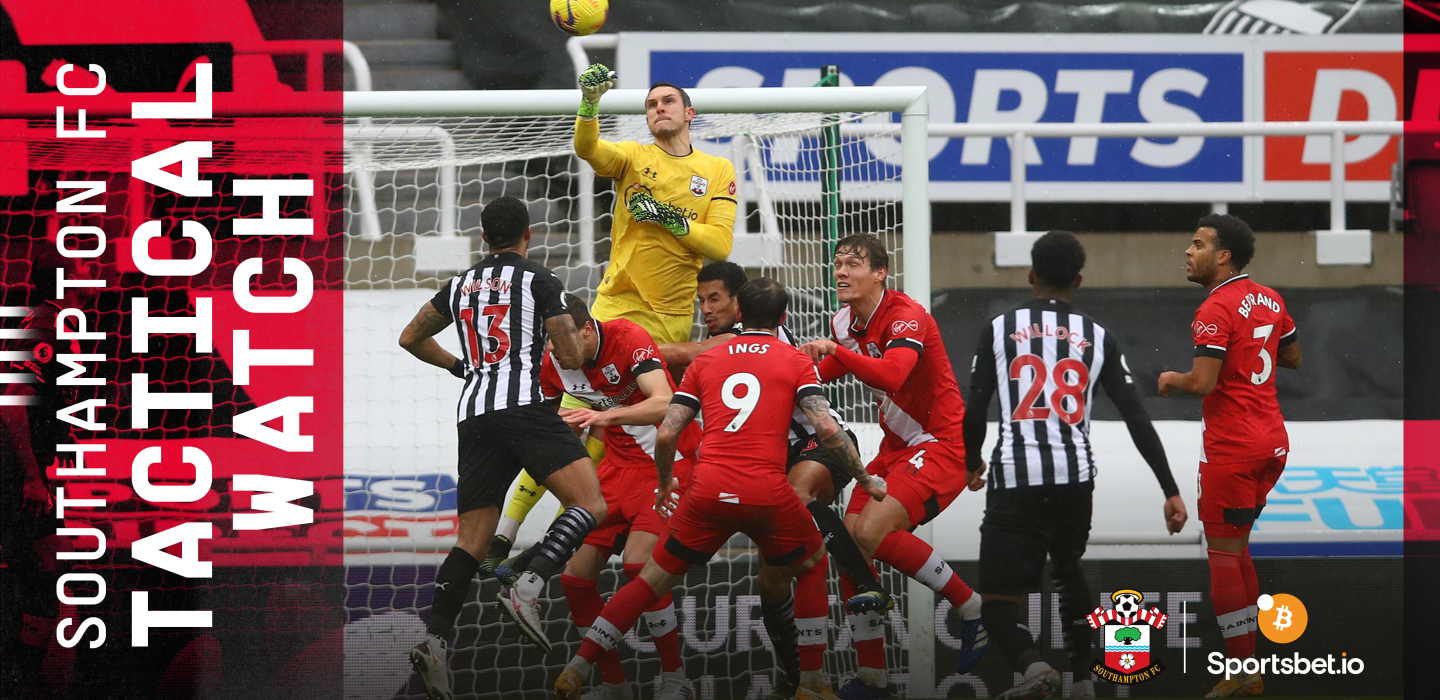Tactical Watch: Defending crosses key at Goodison

Sam Tighe looks ahead to Southampton's trip to Goodison Park on Monday in his latest Tactical Watch column, in association with Sportsbet.io.
Next up, Southampton meet a buoyant Everton side; one who recently beat their arch-rivals, Liverpool, at Anfield for the first time in decades and celebrated one of their key men, Lucas Digne, signing a new contract this week.
Led by Carlo Ancelotti, they’ve grown into the season and become a flexible, dynamic threat while retaining solidity at the back. The Toffees will prove tough opposition, but with a win over them already in the bank this season, Ralph Hasenhüttl will have a plan to lean on and build from.
Here are the three keys to Southampton taking three points at Goodison Park on Monday.
The last time these two teams met – a 2-0 win for Southampton back in October – Everton’s setup was a pretty consistent 4-2-3-1 formation, with James Rodríguez on the right switching the ball to Digne on the left to cross into the box. It was a pretty consistent pattern from a pretty consistent team.
The Everton team set for battle on Monday are a world away from that.
Ancelotti has utilised at least three different shapes over the course of February; some of that has come as a result of injuries, but there’s also clear intent to switch things up according to the opposition.
Ben Godfrey (comfortable anywhere across the back line and stepping into midfield) and Richarlison (plays across the forward line) mean the Italian tactician can tweak the shape and focus of the team at will.
Southampton’s pressing game relies on clear assignments and triggers, and those depend on the shape and tendency of the opponent. It makes them tough to prepare for.
The shape of the team may change, but you can bank on two consistent tenets in Everton’s play: channel runs from the strikers and a deluge of crosses from the left flank.
The runs come from Dominic Calvert-Lewin and Richarlison, who both offer a robust physical challenge to any centre-back they come into contact with. Their willingness to stretch play by making those runs in behind creates space for James to operate between the lines – but also gives the Toffees’ defenders a longer passing option if required.
The crosses come from Digne, who not only supplies some of the best deliveries the Premier League has to offer, but sends them in at breakneck rate; only Pedro Neto, Andy Robertson and Trent Alexander-Arnold have crossed more times this season – and Digne missed seven games with an ankle injury.
Digne’s deliveries bring Calvert-Lewin back into play in the box, his powerful headers and nose for a scrappy chance counting as things for Jannik Vestergaard and co. to be very wary of.
The large majority of Everton’s good recent work and results have come on the road. They’ve won five of their last six (and drawn the other) away from Goodison Park, a record bettered only by Manchester City.
At home is a different story: three losses on the bounce, four losses in five – two of which have been to Newcastle United and Fulham sides fighting for their lives at the bottom of the table.
They’ve played with an assertiveness, confidence and level of control away from home; but on their own turf, those elements have at times evaporated.
They’ve allowed opponents to establish a rhythm. Newcastle – statistically the least intensive pressing team in the league this season – pressed them into corners and created chances at will. Fulham’s game plan was different, more withdrawn, but just as effective in nullifying the Toffees.
Whether it’s a mental block, the difference in how sides play away from home or something else is genuinely unclear, but teams who assert their own game plans at Goodison have tended to come out the winner in 2021. Southampton must continue that trend.

